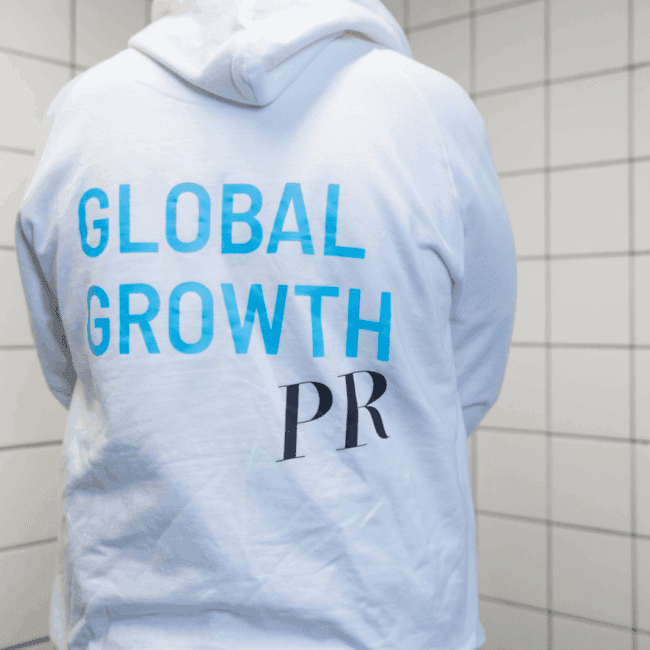In this blog, we’ll explain what GEO is, why it matters, and why PR skills are more relevant than ever.
What is GEO?
GEO stands for Generative Engine Optimization. It refers to strategies to make your content more visible within generative AI search systems (like ChatGPT, Google’s AI Overviews, Gemini, Copilot, Perplexity) rather than merely ranking in traditional search engine result pages.
In the classical SEO model, you optimized for keywords, backlinks, and on‑page signals so that search engines (e.g. Google) would list your page in response to a query. With GEO, the goal is to become a source that AI models will cite, embed, or reference in their generated answers.
Because generative engines synthesize answers from multiple sources, they tend to favor content with strong authority, structured clarity, citations, and domain trust.
In short: whereas SEO is about ranking in lists, GEO is about becoming part of the answer.
AI content overload, low-value content, and the zero-click era
One of the consequences of more AI-generated content is a proliferation of thin, shallow, generic content. AI tools make it easier to pump out “answers,” but often with minimal originality, insight, or added value. Over time, readers grow fatigued with repetitive or superficial content.
This trend has contributed to the rise of the zero-click era — where users get the info they need without ever clicking through to original content.
In practice, zero-click means that users see answers in featured snippets, AI summaries, or embedded answers inside the search interface, and they don’t click on your article. The downside: you lose traffic, engagement, brand touchpoints, and the ability to convert. The upside: your brand or message may still appear (if it’s used as a source). But the value shifts from “clicks” to “citation / presence in AI answers.”
Thus, content that is merely derivative or low value becomes less useful, because AI systems pick up that minimal content too, and distributing it en masse dilutes attention. What rises in importance is unique, authoritative, well-researched content. Content that is worth citing.
Why is traditional media more relevant than ever?
Generative AI systems tend to prioritize high‑authority, trusted sources. In a world of content overload, domain authority, credibility, and trust matter. Traditional media brands still hold strong in these dimensions, and thus they remain fertile ground for AI as a source.
Because media outlets tend to have higher domain authority (DA), established brand reputation, and journalistic rigor, their content is more likely to be included or cited in AI answers.
AI models often use established media as primary reference material, because of the perceived quality and reliability of those sources.
In academic experiments, GEO strategies that tilts toward earned media (versus brand-owned content) often are more successful in being cited.
Thus, getting coverage in strong media outlets not only gives you exposure to human readers, but also helps your content become part of the underlying knowledge graph that AI systems reference. In other words: your earned media is “fuel” for GEO.
PR skills matter more than ever
Here is the paradox: while gained media is more valuable, getting coverage is harder than it used to be. Why?
Shrinking newsrooms & budget cuts: Many media organizations are under financial pressure, cutting staff, reducing investigative capacity, and publishing less. There are fewer journalists available to cover brand stories.
Greater competition for attention: In a crowded content field, journalists get overwhelmed with pitches. Brands are vying for limited reporter bandwidth.
Higher standards for sourcing & originality: Because AI‐era concerns of misinformation are growing, the media demand stronger data, verification, exclusivity, and stories that go beyond press release boilerplate.
Gatekeeping and trust issues: Journalists are wary of overt marketing or promotional messaging. They look for genuine news value, not branded fluff.
Thus, in this evolving landscape, strong PR skills are essential. It’s not enough to broadcast. Brands must earn attention through story crafting, data, transparency, and credibility.
So how to actually win earned media in the GEO era? Here are three actionable strategies to help you break through and get real earned media that GEO and audiences will respect:
1. Offer value to journalists via interesting, transparent stories
Don’t pitch marketing fluff. Instead:
Provide journalist‑friendly angles, with context, clarity, and open access to people or data.
Make the story relevant: timely (tied to current events or trends), local/national angles, or human interest hooks.
Be transparent: offer your sources, methodology, quotes, and backing. Help the reporter trust your data.
Respect their constraints (word count, deadlines). Make it easy for them to use your info.
When journalists feel you’re helping them, not trying to exploit them, your pitch is more likely to be accepted.
2. Own your data: use original surveys, studies and insights
Generic commentary is a dime a dozen. But when you bring new data, proprietary research, unique angles, you give the media something they can’t get elsewhere.
Conduct surveys, polls, experiments, or audits in your field.
Use that data to generate newsworthy trends or surprises.
Share access to the dataset (where feasible) so journalists can dig in and build further.
Use your data to build thought leadership. Journalists often love trend stories backed by fresh numbers.
Original data = new insights = more “news value.”
3. Be bold — predict, opine, disrupt
Safe statements rarely make headlines. Brands that predict trends, take stances, or present contrarian insights are more likely to be memorable.
Don’t shy away from forecasts or projections (with caveats) — bold views attract attention.
Be candid: express what you really think based on your expertise (while being responsible).
Use provocative questions or frames to stir interest.
Bold brands may polarize, but they also get remembered and covered.
Journalists often look for voices with conviction. A brand that says something interesting (even controversial) is more likely to be quoted or covered.
Conclusion
The rise of GEO and AI‑driven search doesn’t kill PR – it rewards it, provided you adapt. In a world where zero‑clicks proliferate and low-value content floods the landscape, earned media becomes one of your strongest levers: it builds domain credibility, fuels AI citation, and places your voice in the conversation.
To thrive:
Focus on GEO‑aware content (structured, authoritative, scannable)
Seek high‑trust media exposure
Apply the tactics above to get coverage that matters and lasts.
READ MORE: Three things comms professionals wish they could tell their CEO about comms



